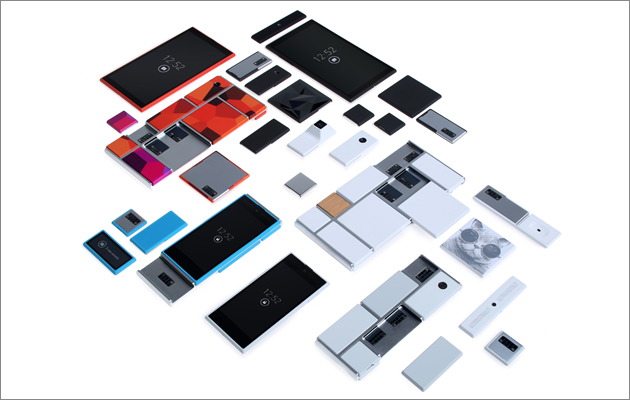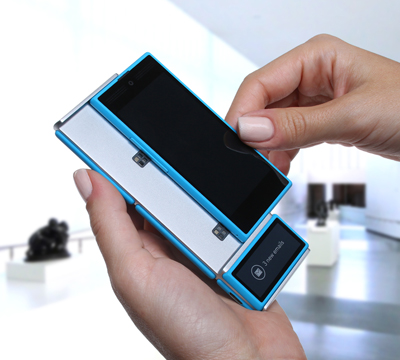|
|
||
|
With the modular Google Ara mobile phone, the San Francisco-based technology designer hopes to challenge the culture of disposability that has developed around technology Gadi Amit is deeply frustrated by what he sees as the design sector’s resistance to change. “The world of furniture is completely ignoring technology – it’s still designing furniture for using typewriters,” says the founder of New Deal Design, the studio behind the modular mobile phone that Google is set to launch next year. Part of the blame for this, he says, lies with design schools. “They sustain and feed this approach. Designs schools are a kind of pyramid scheme – they are not preparing designers for the right challenges.” The challenges, in Amit’s view, are related to the social role of technology, something he believes is illustrated by the commercial failure of Google Glass. “Why didn’t they put a light on the devices that indicated if they were on or off, so you’d feel more comfortable around people wearing them?” His San Francisco-based practice spends much of its time considering how we might live in the future. Among such projects are Beep, a device launched last month that remotely streams music through any speaker, or the Underskin, an idea for an implant embedded just beneath the skin of your hand that would enable interaction with external devices – he believes this radical proposal for the future of wearable technology could happen in five to ten years.
The Underskin could allow you to interact with other devices and people But New Deal Design’s most talked about project is the Ara for Google. Billed as the phone “designed exclusively for six billion people”, the device is an attempt to make smartphones available to billions more people around the world. It comprises a basic central structure (an “endoskeleton”) onto which modules – the screen, battery, CPU, camera and more – are attached. These slide into place and can be removed individually, so can be replaced according to your means or needs. The skeleton accepts modules of various sizes, allowing the device to be sized up or down. Amit envisages these additional elements being developed by third parties, in the way apps are now – the practice has already made the specifications public to enable such a market to develop. The team is also looking into 3D-printing components, but for now the device is made of a polycarbonate plastic. Google anticipates that a basic, working Ara will cost only $50 to $100.
The components of the Google Ara can be replaced by the user Amit hopes to challenge the culture of yearly upgrades and disposability that has developed around technology. “Consumers – programmed by companies and the media – are too willing to upgrade their devices,” he says. With the Ara, people may be able to replace elements of their phone, but there will be fewer reasons to simply scrap the whole system as a matter of course. “To some extent it’s future proof,” he says. Developing an entire new system to combat wastefulness may seem counter-intuitive, and Amit argues that software, rather than hardware, is the reason for technological obsolescence. “Nobody tells software people to develop systems with 10 to 15 years of backward-compatibility.” He believes that governments should regulate interoperability between platforms. “Politicians are far behind on this.” And, despite the recent proliferation of software, Amit is confident that there’s a resurgence of interest in well-designed hardware: “We don’t need any more apps, but things like the battery life of a phone still matter.” With phones you can update and technology under our skin, we may soon develop significantly longer-term relationships with devices.
The founder of San Francisco-based New Deal Design, Gadi Amit |
Words Debika Ray
Above: The Google Ara and its components |
|
|
||























